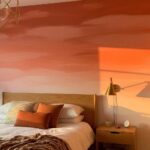Eclectic home decor is all about mixing styles, colors, and textures to create a space that feels personal and full of character. It blends the old with the new, the bold with the subtle, and the unexpected with the familiar.
Each room becomes a canvas for creative expression without following strict rules. You can combine vintage finds with modern furniture or play with patterns and art in unique ways.
If you’re ready to bring personality into every corner of your home, explore these 17 eclectic home decor ideas that cover every space, from the bedroom to the bathroom.
Contents
- 1 1. Maximalist Gallery Wall with Floating Shelves
- 2 2. Color-Blocked Ceiling Treatment
- 3 3. Floating Nightstand Sculpture Wall
- 4 4. Vintage Rug Layering System
- 5 5. Statement Staircase Makeover
- 6 6. Kitchen Island Transformation Station
- 7 7. Mixed Metal Fixture Combinations
- 8 8. Textural Wall Treatments
- 9 9. Suspended Indoor Garden
- 10 10. Vintage Door Repurposing
- 11 11. Curved Furniture Integration
- 12 12. Bookshelf Styling Revolution
- 13 13. Maximalist Powder Room
- 14 14. Antique Window Frame Displays
- 15 15. Fabric Canopy Systems
- 16 16. Unexpected Seating Solutions
- 17 17. Architectural Element Highlighting
- 18 Conclusion
1. Maximalist Gallery Wall with Floating Shelves

You can transform blank walls into storytelling masterpieces by combining framed artwork, vintage mirrors, and floating shelves at varying heights.
The magic lies in the 60-40 rule: 60% wall art, 40% three-dimensional objects like small sculptures, plants, and books. This approach creates visual depth while maintaining organized chaos. Layer different frame materials—brass, wood, and matte black—to add texture without overwhelming the space.
Position floating shelves to break up large artwork clusters, creating breathing room that prevents visual fatigue.
2. Color-Blocked Ceiling Treatment
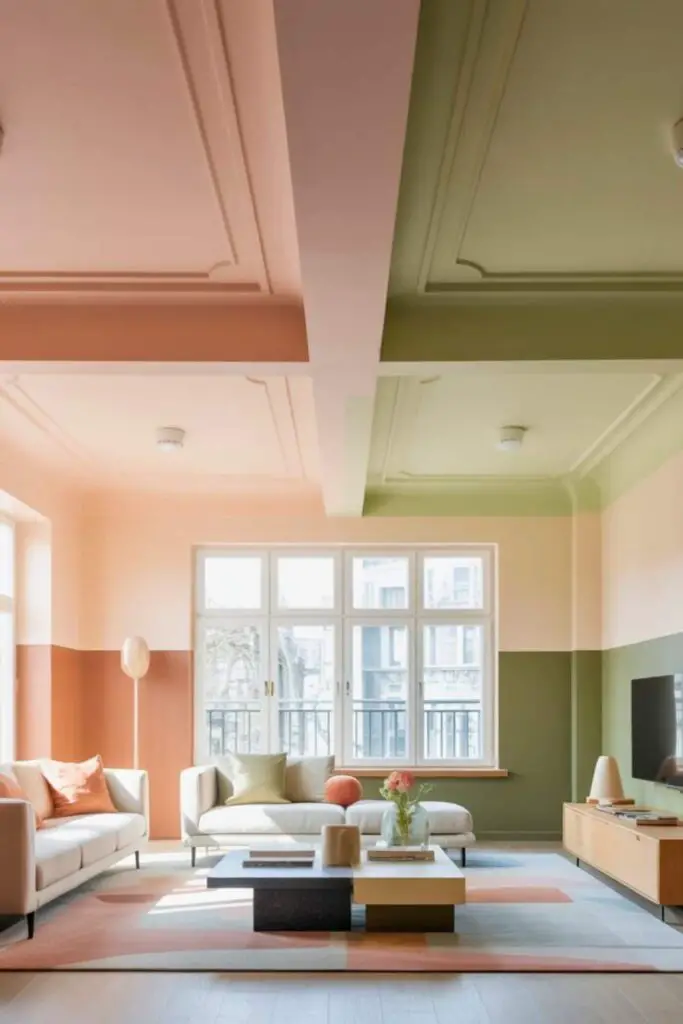
Forget traditional white ceilings—you can paint geometric sections in complementary colors that echo your room’s palette. This unexpected approach draws the eye upward, making spaces feel larger while adding architectural interest to bland rooms.
Choose colors that are two shades lighter than wall colors to maintain balance. Paint connected rooms in a flowing color sequence that creates visual continuity throughout the home.
Read More about – Home Decor Color Ideas
3. Floating Nightstand Sculpture Wall

Create a dramatic bedroom focal point by mounting asymmetrical floating nightstands at different heights on either side of the bed. Mix materials like live-edge wood, acrylic, and metal to create a sculptural wall installation that serves as both functional storage and art.
You can incorporate hidden LED strip lighting behind each floating piece to create a soft glow that eliminates the need for traditional table lamps. This approach works especially well in small bedrooms where floor space is limited, creating vertical storage while maintaining an airy feel.
4. Vintage Rug Layering System
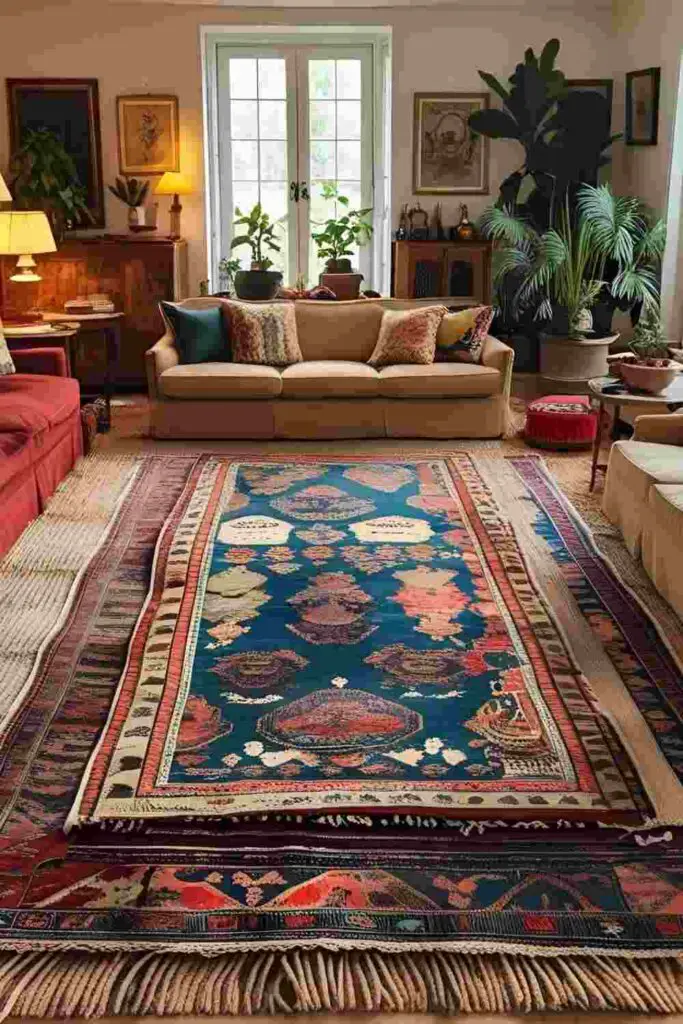
You can stack vintage rugs of different sizes and patterns to create a luxurious, collected-over-time aesthetic. Start with a large neutral base rug, then layer smaller vintage pieces with bold patterns or rich colors on top.
This technique works exceptionally well in dining rooms and bedrooms where zone definition matters. The bottom rug must extend at least 18 inches beyond the top layer on all sides.
5. Statement Staircase Makeover
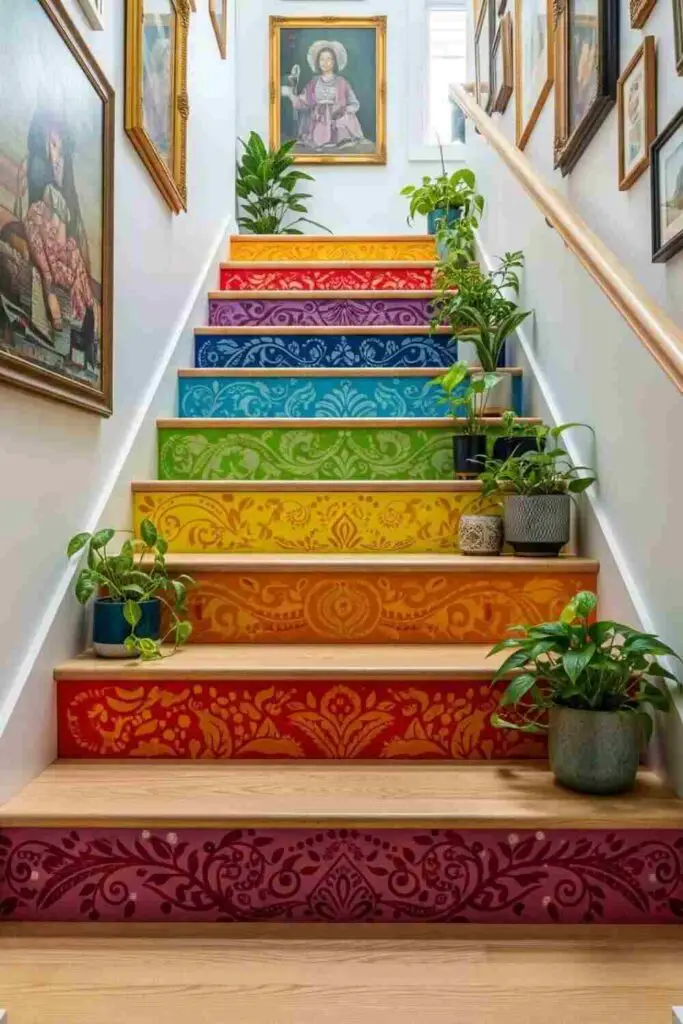
Paint each stair riser in a different color or pattern to create a rainbow staircase that becomes the home’s focal point. This bold move transforms utilitarian staircases into functional art installations. You should select colors that complement the home’s overall palette while maintaining enough contrast for safety.
Consider geometric patterns or ombre effects for a more sophisticated approach.
6. Kitchen Island Transformation Station

Transform your kitchen island into a multi-functional art piece by wrapping it in reclaimed materials like vintage shutters, barn wood, or decorative tiles, with each side featuring a different material or pattern.
Add unexpected elements like a built-in herb garden, wine rack, or cookbook display niche.
You should incorporate pendant lights at varying heights above the island, mixing different styles like industrial Edison bulbs with bohemian macramé fixtures. This creates a kitchen island that functions as the room’s centerpiece while maximizing both storage and visual impact.
7. Mixed Metal Fixture Combinations
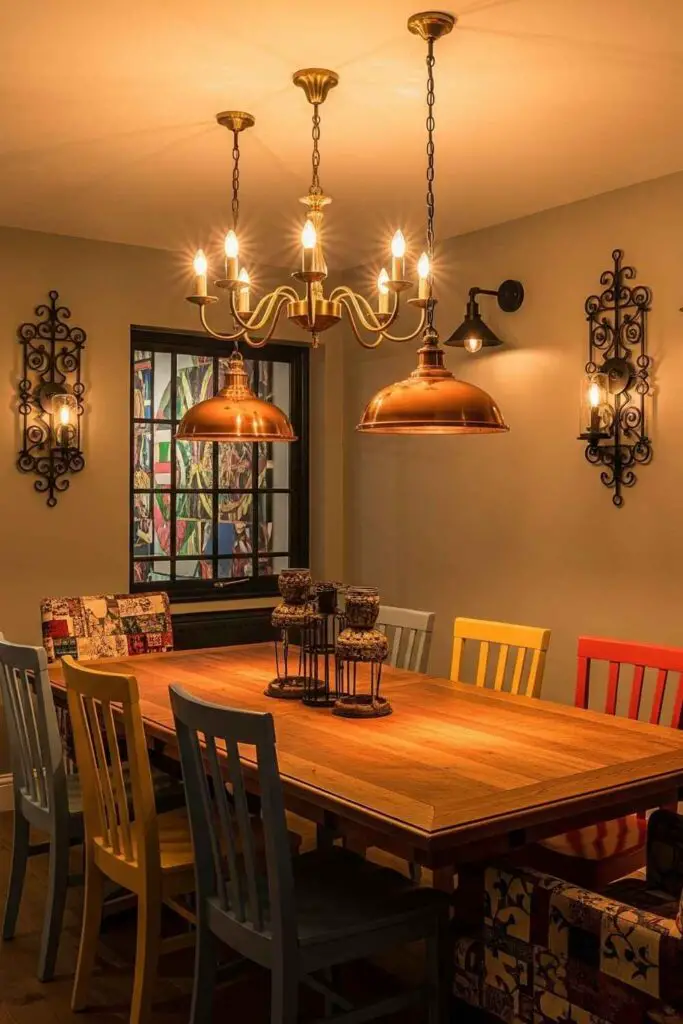
Combine brass, copper, black iron, and chrome fixtures within the same space to create visual interest and prevent the sterile look of matching metals. The secret is maintaining consistent proportions and distributing metals evenly throughout the room.
You could install a brass chandelier, copper pendant lights, and black iron sconces to create layers of lighting while showcasing eclectic style. This approach works particularly well in kitchens and dining areas.
8. Textural Wall Treatments
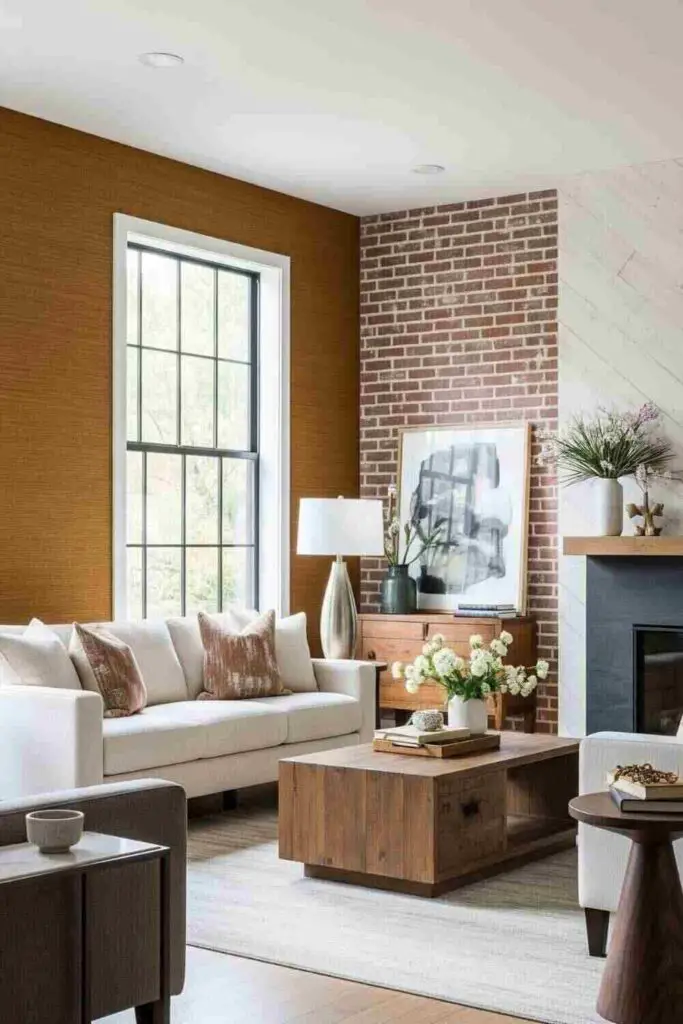
Combine grasscloth wallpaper, exposed brick, and painted wood panels on different walls within the same room. This creates sophisticated contrast while maintaining cohesion through a unified color scheme.
You’ll find success by choosing three textures that complement rather than compete—smooth, rough, and medium textures work best together. Keep 70% of the room in neutral tones to let textures shine.
9. Suspended Indoor Garden
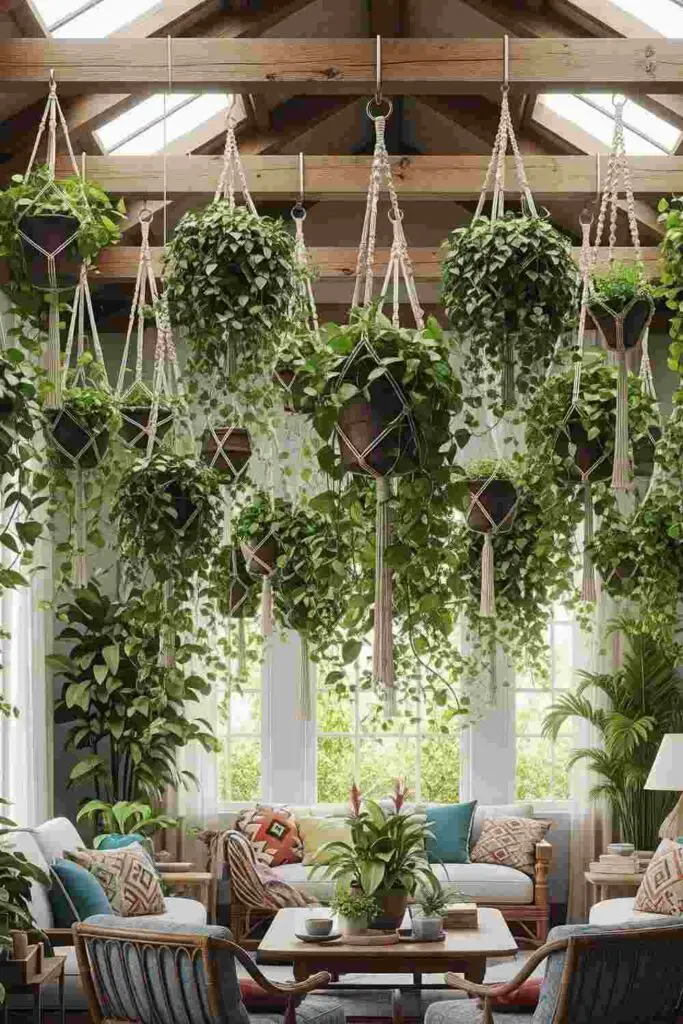
Create a living ceiling installation by suspending planters at different heights using macrame hangers, metal chains, and rope. This approach brings nature indoors while creating a dynamic overhead landscape.
You should vary plant types between trailing varieties like pothos and upright plants like snake plants.
Install proper drainage systems and consider weight distribution for safety.
10. Vintage Door Repurposing
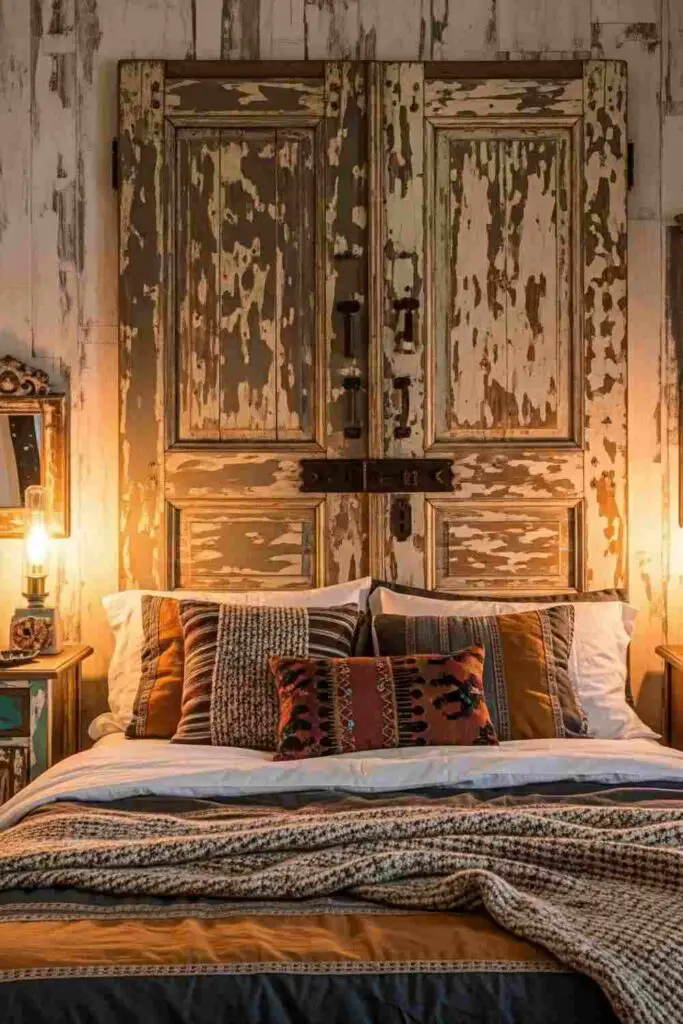
Transform old doors into headboards, room dividers, or decorative wall panels. Sand, paint, or stain them in colors that complement the space while preserving their original character and hardware.
You might position doors as architectural elements rather than functional barriers. Lean them against walls or mount them horizontally as headboards for instant vintage charm.
11. Curved Furniture Integration
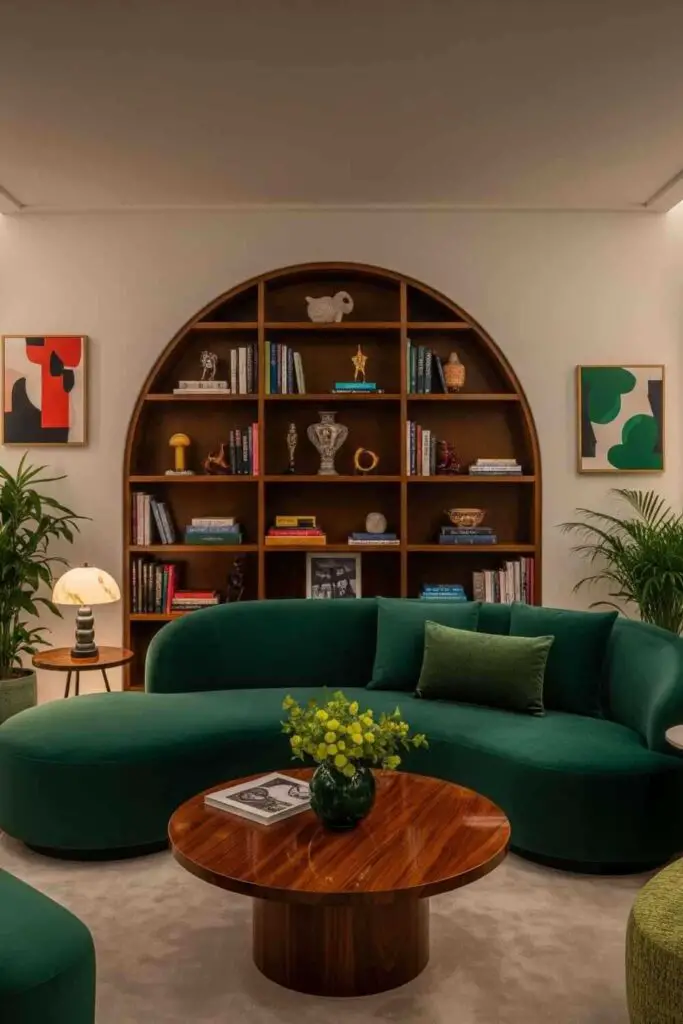
Incorporate curved furniture pieces—round coffee tables, kidney-shaped sofas, and arched bookcases—to soften angular rooms. This creates flow and prevents the boxy feeling common in modern homes.
You need to balance curved pieces with some angular elements to maintain visual interest. The 70-30 rule works well: 70% curves, 30% angles, or vice versa.
12. Bookshelf Styling Revolution
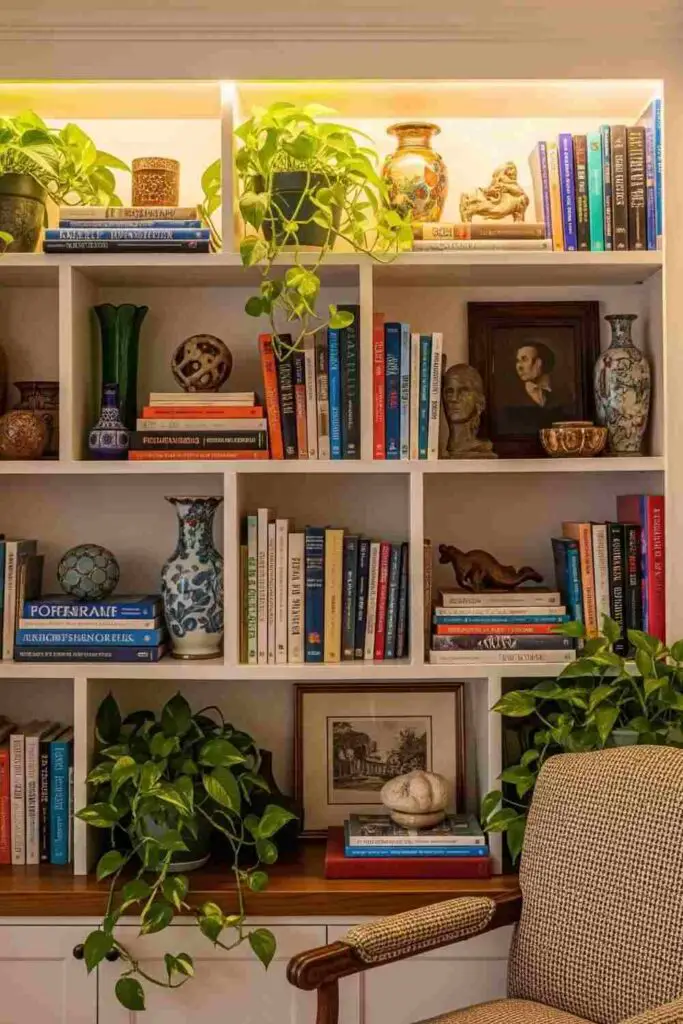
Style bookshelves with books facing both ways—some showing spines, others displaying page edges for a creamy, textured look. Intersperse books with plants, artwork, and decorative objects in odd-numbered groupings.
You should create visual triangles by varying heights and clustering objects in groups of three or five. Leave some shelves partially empty to prevent visual overwhelm.
13. Maximalist Powder Room
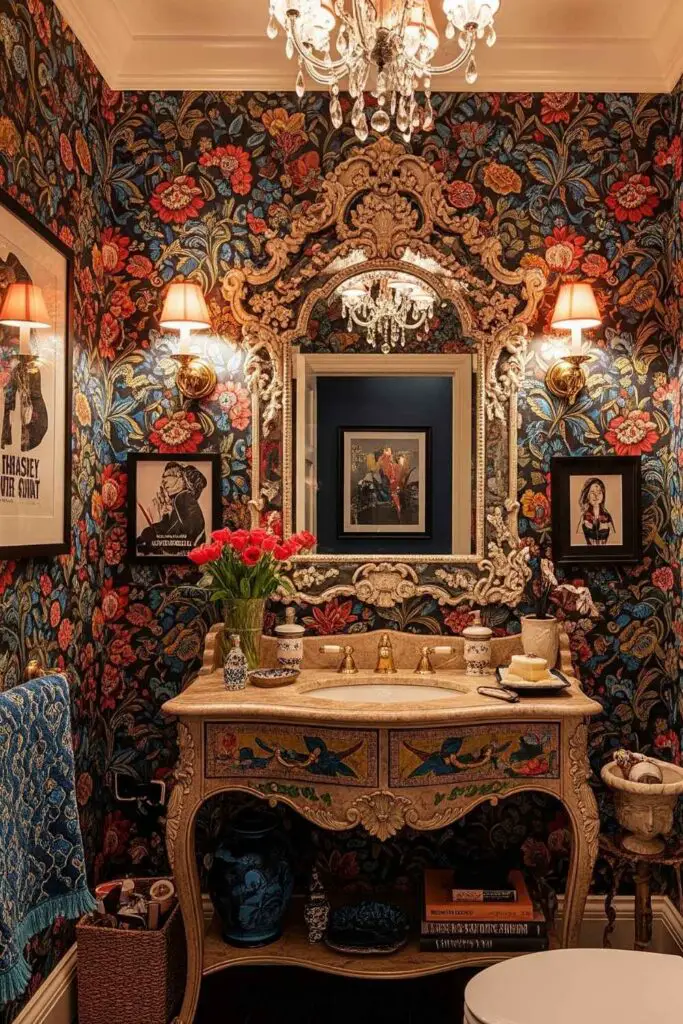
Transform small powder rooms into jewel boxes by covering walls in bold wallpaper, adding ornate mirrors, and incorporating unexpected elements like vintage chandeliers or bold artwork.
Small spaces can handle more patterns and colors than larger rooms.
You should use this to your advantage by creating intimate, dramatic experiences that surprise guests.
14. Antique Window Frame Displays
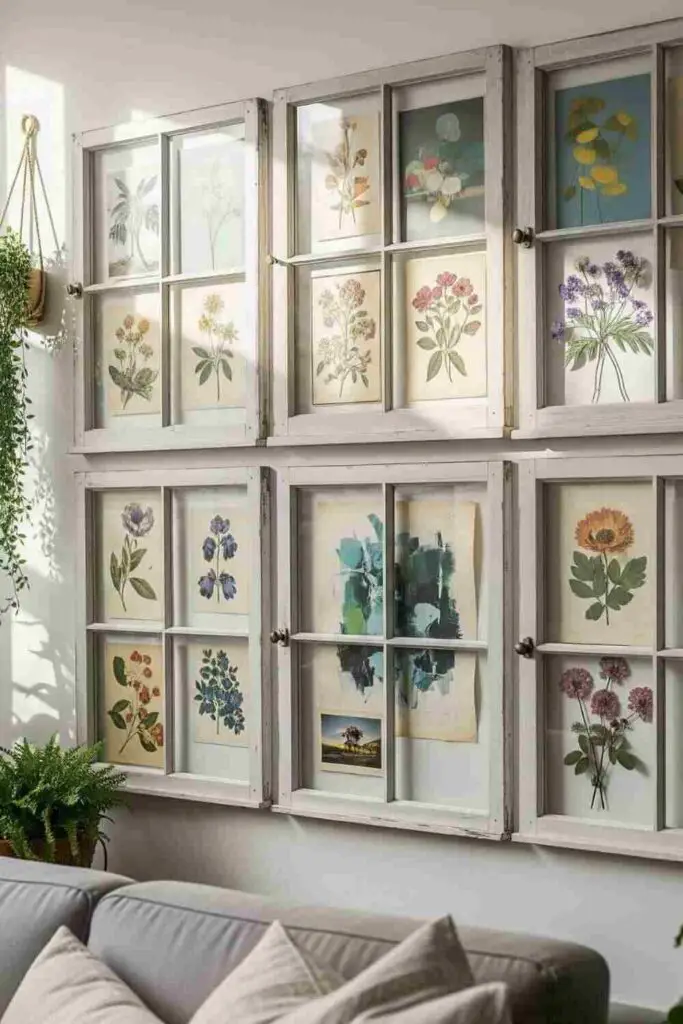
Mount vintage window frames as decorative elements and fill each pane with different artwork, pressed flowers, or mirrors. This creates a cohesive display that tells a story while adding architectural interest.
You should source frames from salvage yards or antique shops, then customize them with spray paint or stain to match the decor. Vary the sizes for dynamic visual impact.
15. Fabric Canopy Systems
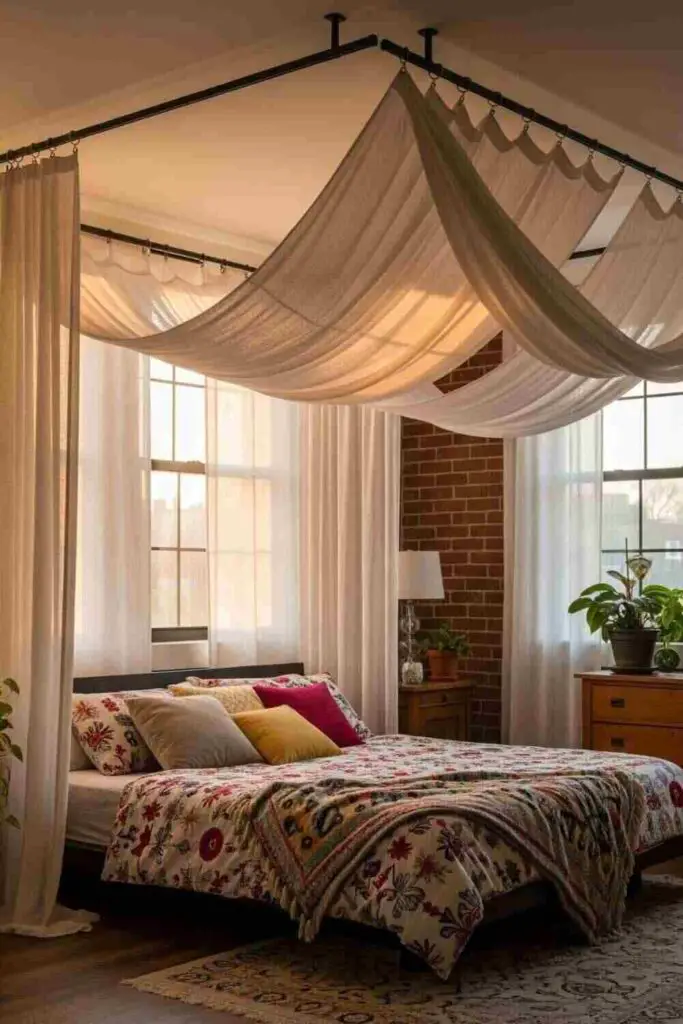
Install ceiling-mounted fabric canopies over seating areas or beds using lightweight materials like chiffon or linen. This creates intimate spaces within larger rooms while adding romantic, bohemian flair.
You’ll want to choose fabrics that complement the color scheme while allowing light to filter through. Install simple ceiling hooks or tracks for easy seasonal changes.
16. Unexpected Seating Solutions
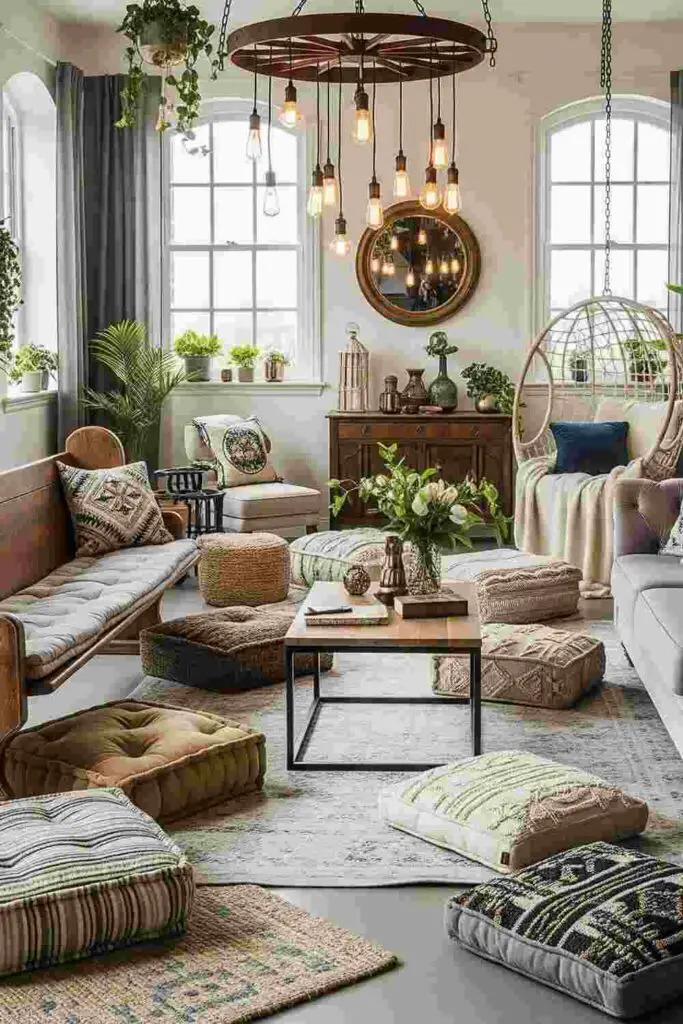
Incorporate non-traditional seating like vintage church pews, meditation cushions, or swing chairs to create conversation starters and functional art pieces.
You should mix traditional seating with unexpected options to create dynamic social spaces. Ensure comfort while maintaining visual interest through varied heights and textures.
17. Architectural Element Highlighting
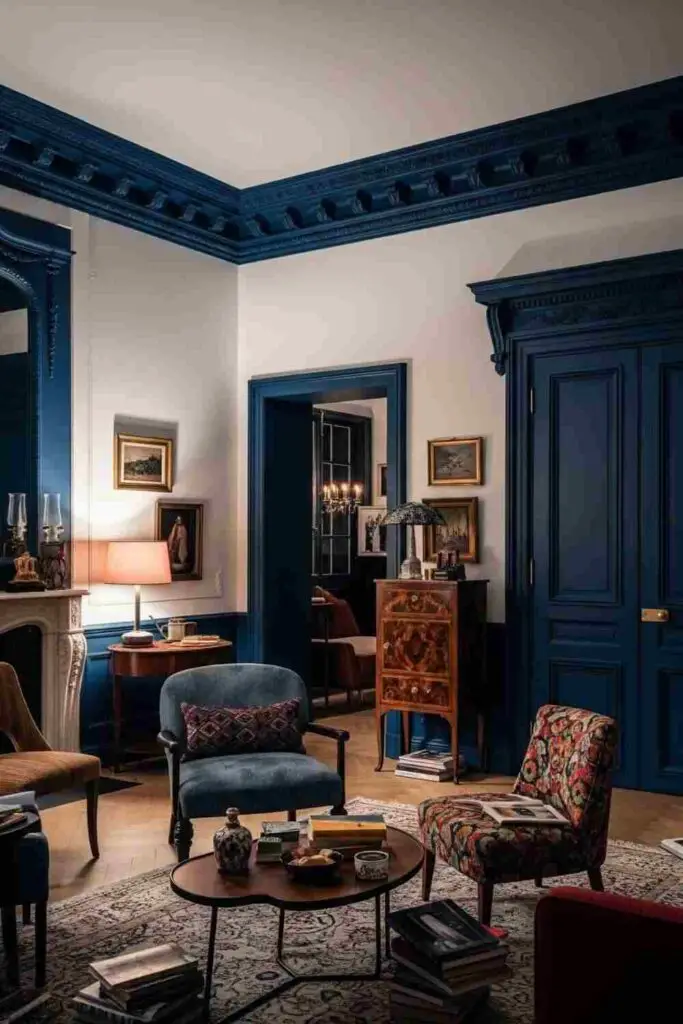
Paint crown molding, door frames, and window trim in contrasting colors to create architectural drama. This technique works especially well in older homes with existing character details.
You must choose colors that are either much lighter or much darker than wall color for maximum impact. This approach can make ceilings appear higher and rooms feel more spacious.
Conclusion
Eclectic design celebrates the beauty of mixing unexpected elements while maintaining purposeful balance. These 17 Eclect home decor ideas prove that breaking traditional design rules creates the most memorable and personalized spaces. Start with one or two concepts that resonate with your style, then gradually layer additional elements as your confidence grows.
The most successful eclectic spaces tell your unique story through carefully curated pieces that reflect your personality, travels, and passions.
Don’t be afraid to experiment—mix vintage finds with modern elements, bold statements with subtle textures, and high-end pieces with budget discoveries. The result will be a home that’s not just visually stunning, but deeply personal and endlessly inspiring.


